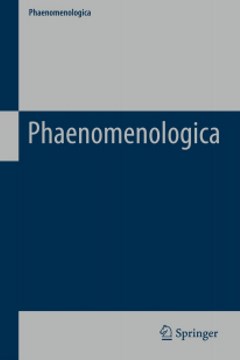The symbolic totalization of sensible multitudes
pp. 61-71
Abstrakt
In the chapter preceding his discussion of the symbolic representation of number in PA, Husserl explores "the symbolic representations" of sensible multiplicities.1 These analyses parallel those following. However, the accounts only parallel one another. The pre-given or pre-totalized sensible multitudes are not abstractive bases for number concepts. Rather, Husserl demonstrates that the problems encountered in the realm of sense are analogous to those encountered in that of the formal. His prime objective with regard to the former is to account for how that which is "not directly given" but given "indirectly through signs," may also be understood in light of the mechanisms of "actual ... representation."2 Husserl cannot but seek to understand that which eludes the immediate grasp of consciousness in terms of that which does not.
Publication details
Published in:
Cooper-Wiele Jonathan (1989) The totalizing act: key to Husserl's early philosophy. Dordrecht, Springer.
Seiten: 61-71
DOI: 10.1007/978-94-009-2259-4_5
Referenz:
Cooper-Wiele Jonathan (1989) The symbolic totalization of sensible multitudes, In: The totalizing act, Dordrecht, Springer, 61–71.







